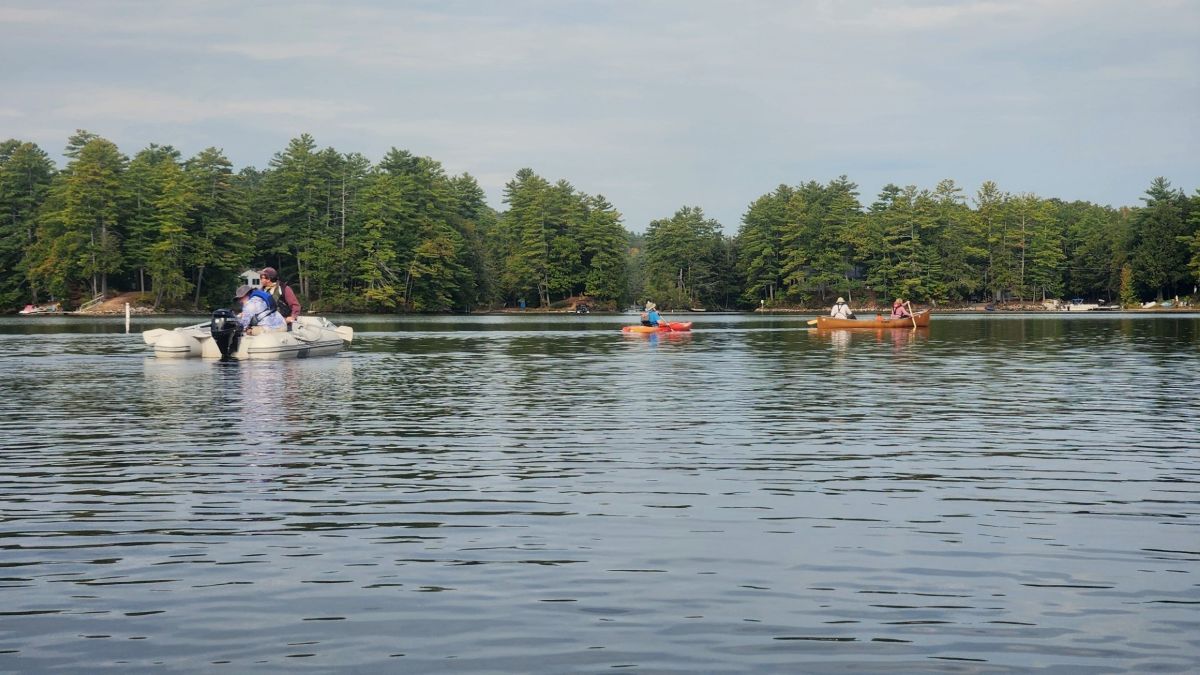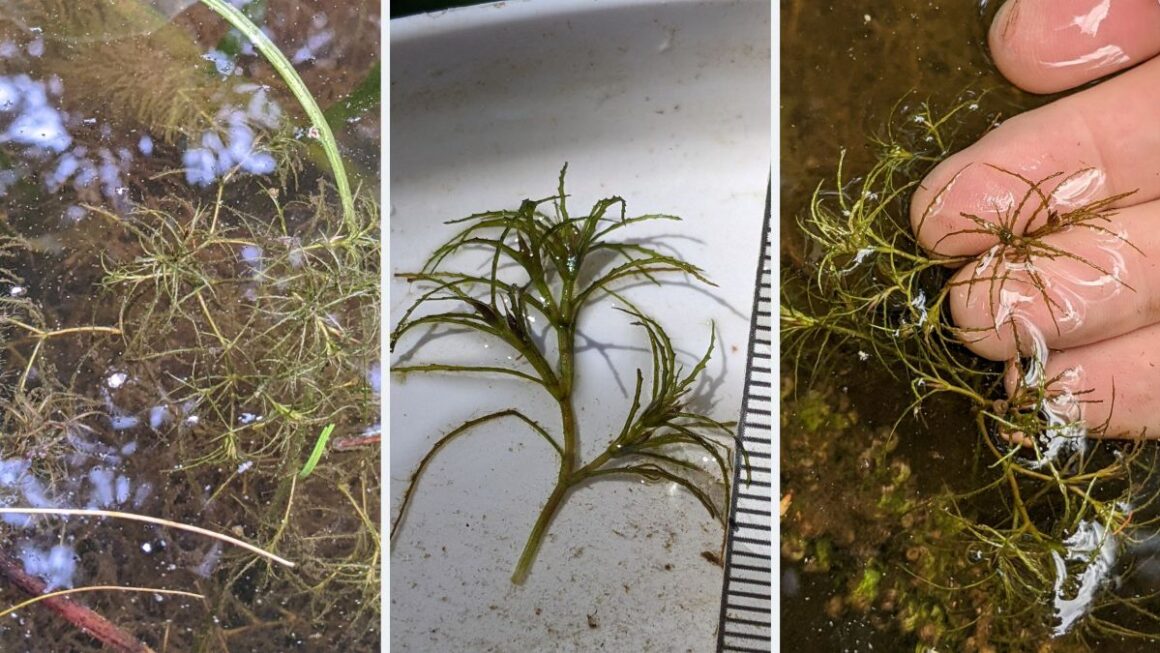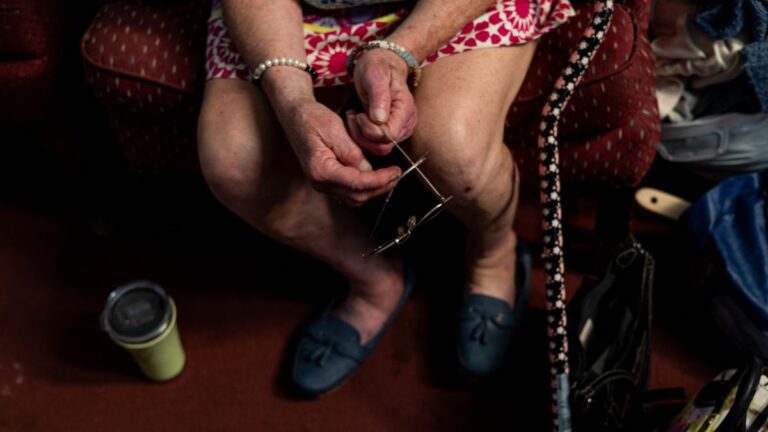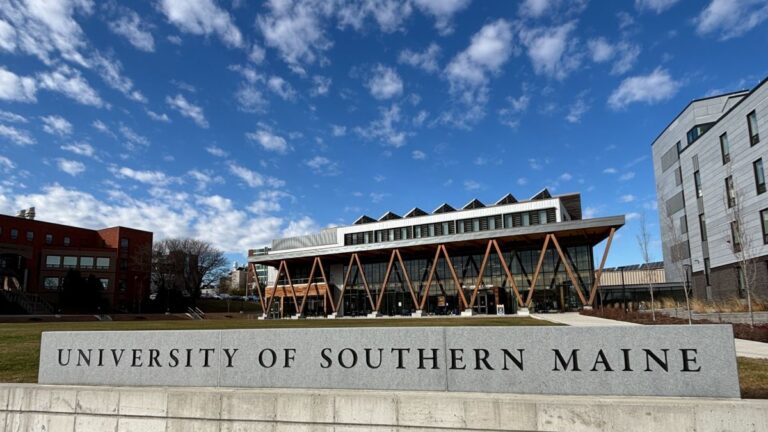Over the summer, the state of Maine applied herbicide to part of Sokokis Lake in Limerick in the hopes of snuffing out a pesky invasive plant. Early signs show it might be working.
If the efforts prove successful long-term, it would mark a significant win against what the Lakes Environmental Association describes as “arguably the most difficult invasive plant to control in Maine.”
Brittle naiad, an aquatic plant native to Europe and originally introduced in the United States as a food source for waterfowl, can spread quickly and choke out native plant species.
The invasive plant was first found in Sokokis, also known as Holland Pond, in 2022 in the lake’s southern basin. Attempts to control it manually with trained volunteers pulling the plants by hand proved to be an uphill battle.
Eradicating invasive aquatic plants is no easy task. What makes brittle naiad particularly problematic is that it is small and resembles a native species of naiad, making it difficult to identify. The invasive species reproduces by fragmentation and the dispersal of tiny seeds, which can hitchhike on boats and be consumed and transported by waterfowl. If even a tiny piece of a plant makes its way to a different location, it can start a new population.
John McPhedran, an invasive aquatic species biologist at the Maine Department of Environmental Protection, said several factors led to the decision to use herbicide: the infestation was still relatively isolated; the plant continued to bounce back after attempts to manually remove it; and there was a risk that it would spread throughout the lake or to nearby water bodies.
“You think, well, maybe we should try and nip this in the bud and use herbicide now,” McPhedran told The Maine Monitor.
The DEP held a public information meeting in June and later got approval under its general herbicide application permit to apply the herbicide AquaStrike. On July 31, a state contractor submerged a perforated hose to spray the herbicide on the plant in three locations on the south end of Sokokis, treating about four acres of the 192-acre lake.
There are early signs that the treatment worked. Last month, staff from Lake Stewards of Maine, the DEP, and the York County Soil and Water Conservation District, along with volunteers from Sokokis Lake Association and Patrollers of Arrowhead’s Littoral Zone, conducted a post-treatment survey and did not find any living brittle naiad.
“That’s encouraging news,” McPhedran said. “But the visibility can be difficult in Sokokis — kind of murky and cloudy — so just because we didn’t find any in the fall doesn’t mean that we are out of the woods.”
As part of the ongoing response, the DEP and its partners will continue monitoring Sokokis and will return in late spring or early summer to see how much, if any, of the plant escaped the herbicide. If the invasive plant can’t be eliminated altogether, it will likely have to be managed long into the future, McPhedran said.
Brett Willard, the aquatic invasive species program director at Lake Stewards of Maine, which led the recent post-treatment survey, said the Sokokis infestation highlights the importance of early detection and rapid response. The plant was first found by a trained volunteer who was paddling the lake and actively looking for invasive species.
“There’s a really great group of volunteers that we have statewide, but particularly in York County, which is a high population center, but also there’s a number of [aquatic invasive species] infestations,” Willard said.

The DEP fielded a number of concerns ahead of applying the herbicide in July, including from a local beekeeper and dog owners worried about their pets drinking from the lake, McPhedran said. A notice that went out to lakefront property owners told them not to drink, swim in or use lake water for irrigation in the days after the treatment.
The DEP collected and analyzed water samples to monitor the levels of endothall and Diquat dibromide, the active ingredients in AquaStrike, following treatment. The water samples it tested two weeks after applying the herbicide showed no detectable levels of the chemicals, according to the DEP. It said it found “limited to no” harm to native vegetation.
McPhedran said the state would prefer not to use herbicides when managing aquatic invasives. But in doing so at Sokokis, the DEP is hoping to avoid a similar situation at Milton and Northwest ponds on the Maine-New Hampshire border, where the state and several partners have been fighting a brittle naiad infestation since 2015.
“Obviously, if it’s a new plant and we have a chance at eradication, we need to move quickly,” he said.







